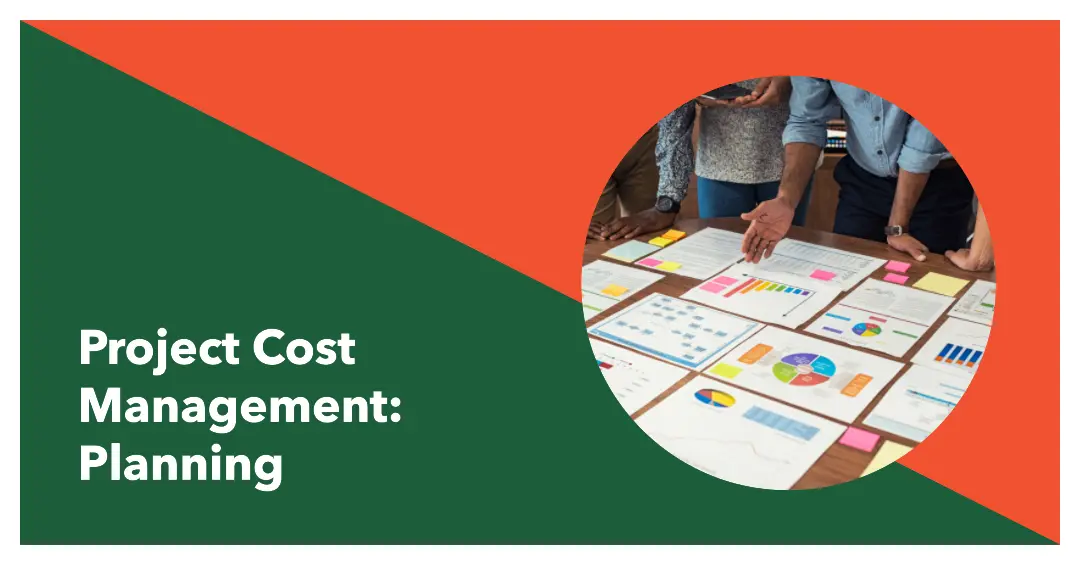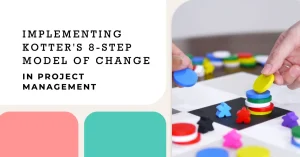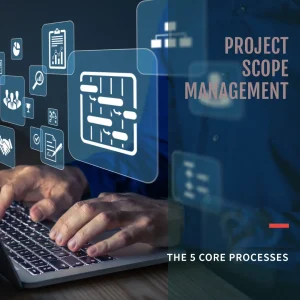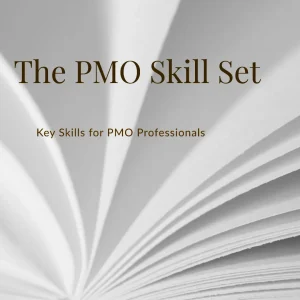To find out how Artificial Intelligence is changing the Project Management landscape, you may enjoy reading this article https://www.shaunstoltz.com/did-artificial-intelligence-just-change-everything-about-project-management/
I. Introduction
Hey there, fellow project managers and enthusiasts! Have you ever found yourself in a situation where a project you were managing spiraled out of control due to poor cost management? I know I have, and trust me, it’s not fun. That’s why I’m here today to discuss the importance of project cost management in business success and give you a brief overview of the first step in managing costs effectively: planning.
Project cost management is crucial for any organization. When we manage costs well, we create a foundation for the successful completion of projects, which ultimately leads to increased customer satisfaction, improved company reputation, and better financial performance. On the other hand, when we don’t pay enough attention to cost management, we risk project delays, budget overruns, and even the dreaded “scope creep” that can leave clients and stakeholders unhappy.
The first step in mastering project cost management is effective planning. Just as Benjamin Franklin said, “By failing to prepare, you are preparing to fail,” and this couldn’t be truer in the world of project management. By taking the time to plan your cost management approach, you are setting the stage for success and giving yourself the tools needed to navigate the complexities of project costs.
So, buckle up and join me on this journey as we delve into the world of project cost management planning! Together, we’ll explore how to identify project cost drivers, create a comprehensive cost management plan, and develop a budget that keeps your project on track and in control.
Stay tuned for the next sections, where we’ll break down each of these important topics in detail and provide tips and strategies to help you excel in cost management planning. And don’t forget, I’m here to learn from you, too! Feel free to share your thoughts and experiences in the comments section as we navigate this essential aspect of project management together.
II. Identifying Project Cost Drivers
Welcome back, my fellow project management aficionados! As promised, we’re diving into the first major component of project cost management planning: identifying project cost drivers. These pesky little factors can make or break your project’s budget, so it’s essential to understand what they are and how to identify them for your project.
A. Definition of cost drivers
In the simplest terms, cost drivers are factors that influence the cost of a project. They can range from labor rates and material costs to regulatory requirements and even the weather. Knowing what drives the cost of your project is crucial because it helps you create more accurate estimates, allocate resources efficiently, and make better decisions when faced with challenges or changes.
B. Common cost drivers in various industries
Different industries will have different cost drivers. For example, in construction projects, labor and materials are often significant cost drivers, while in software development, the complexity of the project and the skills of the development team might be the primary drivers. It’s essential to understand the specific cost drivers for your industry and project type to effectively manage costs.
C. Methods for identifying cost drivers in your project
Identifying cost drivers in your project doesn’t have to be an overwhelming task. Here are some methods you can use:
- Historical data: Look at similar projects your organization has completed in the past. Analyze their costs and determine the key factors that impacted those costs.
- Expert judgment: Consult with subject matter experts within your organization or industry to gain insights into potential cost drivers.
- Market research: Investigate current industry trends and market conditions that may affect your project’s costs, such as fluctuations in labor or material costs.
- Risk analysis: Identify potential risks that could impact your project’s costs and develop strategies to mitigate or manage those risks.
D. Case study: Cost drivers in a real-life project
To illustrate the concept of cost drivers, let’s consider a simple office renovation project. Some of the cost drivers for this type of project might include:
- Labor rates: The cost of skilled labor, such as electricians or painters, can vary widely depending on your location and the current labor market.
- Material costs: The price of materials, such as paint or flooring, can also fluctuate based on factors like supply and demand or changes in the global economy.
- Permits and regulations: Depending on your local building codes, you may need to obtain permits or comply with specific regulations that could impact your project’s cost.
By identifying these cost drivers and others unique to your project, you can develop a more accurate cost estimate and make better decisions throughout the project’s life.
In the next section, we’ll dive into the process of creating a cost management plan, which will help you keep these cost drivers in check and manage your project’s budget effectively. Don’t forget to share your experiences and insights in the comments – we’re all in this together, after all!
III. Creating a Cost Management Plan
Hello again, fellow project management enthusiasts! Now that we’ve explored the importance of identifying cost drivers, it’s time to tackle the next critical aspect of project cost management planning: creating a cost management plan. This essential document will serve as your roadmap to navigate the world of project costs and help ensure that you’re well-prepared for any budgetary challenges that come your way.
A. The purpose of a cost management plan
A cost management plan is a comprehensive document that outlines how you’ll approach cost management throughout your project. It serves several purposes, such as:
- Providing a clear framework for managing project costs
- Ensuring that all stakeholders are on the same page regarding cost management expectations
- Identifying potential risks and opportunities related to project costs
- Establishing a basis for measuring and controlling project costs
B. Key elements of an effective cost management plan
An effective cost management plan should include the following elements:
- Scope of the project: Clearly define the project’s scope to establish a baseline for cost estimation and control. This includes outlining the project’s objectives, deliverables, and any constraints that may impact costs.
- Stakeholder roles and responsibilities: Identify the key stakeholders involved in the project and their roles and responsibilities related to cost management. This helps ensure accountability and proper communication throughout the project.
- Cost estimation methods: Describe the methods you’ll use to estimate project costs, such as analogous estimating, parametric estimating, or bottom-up estimating. Each method has its advantages and disadvantages, so choose the one that best fits your project’s needs.
- Contingency planning: Allocate funds for contingencies to address unexpected events or changes that may impact your project’s costs. This helps mitigate risks and ensures you’re prepared for unforeseen challenges.
- Cost control and monitoring processes: Establish procedures for tracking and controlling project costs, such as regular cost performance reviews and change control processes. This will help you detect potential budget overruns early and take corrective actions as needed.
C. Tools and resources for developing a cost management plan
There are many tools and resources available to help you create a robust cost management plan, such as:
- Project management software: Utilize software like Microsoft Project, Trello, or Asana to help you manage project costs and track progress.
- Cost management templates: Leverage existing templates and resources, such as those offered by the Project Management Institute (PMI), to create a professional and comprehensive cost management plan.
- Online communities and forums: Connect with other project management professionals through online communities, like LinkedIn groups or Reddit, to gain insights and advice on creating an effective cost management plan.
In the next section, we’ll discuss how to develop a project budget that aligns with your cost management plan and keeps your project on track financially. As always, feel free to share your thoughts and experiences in the comments below. Your insights help us all become better project managers!
IV. Developing a Budget
Hey there, project management champions! We’ve covered identifying cost drivers and creating a cost management plan, so now it’s time to dive into the next critical piece of the puzzle: developing a project budget. A well-crafted budget not only helps you manage costs effectively but also serves as a communication tool to keep stakeholders informed and engaged. Let’s explore the steps and tools involved in developing a budget that will set your project up for financial success.
A. The role of a budget in project cost management
A project budget is a financial representation of your project’s scope, schedule, and resources. It provides a detailed breakdown of the estimated costs and serves as a baseline for measuring and controlling project performance. A well-designed budget:
- Ensures resources are allocated efficiently
- Provides a clear picture of the project’s financial health
- Facilitates communication and transparency among stakeholders
- Helps you make informed decisions when faced with changes or challenges
B. Steps to create a project budget
- Estimating costs: Use the cost drivers and estimation methods outlined in your cost management plan to estimate the costs associated with each task or work package in your project. Be sure to consider direct costs (such as labor and materials) as well as indirect costs (such as overhead and administrative expenses).
- Allocating resources: Assign resources, including personnel, equipment, and materials, to each task or work package based on your cost estimates. This helps ensure that resources are distributed efficiently and cost-effectively.
- Establishing a cost baseline: Combine the estimated costs and allocated resources to create a cost baseline, which represents the approved version of your project budget. This baseline serves as a reference point for tracking and controlling project costs throughout its life cycle.
- Monitoring and controlling costs: Implement the cost control and monitoring processes outlined in your cost management plan to track your project’s actual costs against the budget. Regularly review and update the budget as needed to accommodate changes in scope, schedule, or resources.
C. Budgeting tools and techniques
There’s no shortage of tools and techniques available to help you create and manage a project budget. Some popular options include:
- Spreadsheets: Microsoft Excel or Google Sheets can be powerful tools for creating and tracking project budgets, especially for smaller projects or those with relatively simple cost structures.
- Project management software: Programs like Microsoft Project or Smartsheet offer more advanced budgeting features, such as resource leveling and cost forecasting, making them ideal for larger or more complex projects.
- Cost management applications: Specialized software, such as Deltek or Procore, can provide even more robust budgeting and cost management capabilities, particularly for industries with unique cost structures or requirements.
D. Example: Creating a budget for a real-life project
Let’s say you’re managing a small software development project. To create a budget, you might start by estimating the costs for each task, such as design, development, and testing, based on historical data or expert input. Next, you’ll allocate resources, such as developers and testers, to each task based on their skills and availability. Then, you’ll establish a cost baseline by combining these estimates and allocations, which will serve as your approved budget. Finally, you’ll implement cost monitoring and control processes to track actual costs and make adjustments as needed throughout the project’s life cycle.
As we wrap up this section, remember that developing a budget is an ongoing process that requires regular updates and adjustments to reflect changes in your project’s scope, schedule, or resources. Stay tuned for the final section, where we’ll share tips for effective cost management planning. And, as always, don’t hesitate to share your thoughts, experiences, and questions
V. Tips for Effective Cost Management Planning
Congratulations, my fellow project management aficionados! You’ve made it to the final section of our journey through project cost management planning. By now, you should have a solid understanding of how to identify cost drivers, create a cost management plan, and develop a budget for your projects. To help you put these concepts into practice, I’d like to share some tips that have helped me effectively plan and manage project costs throughout my career.
A. Engaging stakeholders throughout the process
One of the keys to successful cost management planning is keeping stakeholders engaged and informed throughout the process. This means involving them in the identification of cost drivers, soliciting their input when developing your cost management plan, and regularly communicating budget updates and changes. By fostering a collaborative and transparent environment, you’ll ensure that everyone is on the same page and working together toward your project’s financial success.
B. Continuously updating the plan to reflect changes in the project
Projects are dynamic by nature, and changes in scope, schedule, or resources are inevitable. As such, it’s essential to regularly review and update your cost management plan and budget to reflect these changes. This not only helps you maintain control over project costs but also ensures that stakeholders are aware of any impacts on the project’s financial health.
C. Utilizing technology to enhance cost management capabilities
In today’s digital age, there are countless tools and technologies available to help you plan and manage project costs more effectively. From project management software and cost management applications to data analytics and machine learning, these technologies can streamline processes, improve accuracy, and provide valuable insights to inform your decision-making. Don’t be afraid to explore and embrace these tools to enhance your cost management capabilities.
D. Implementing a robust change control process
As mentioned earlier, changes are an inevitable part of any project. To minimize the impact of these changes on your project’s costs, it’s essential to implement a robust change control process. This includes defining procedures for identifying, evaluating, and approving changes, as well as ensuring that any approved changes are properly documented and communicated to all stakeholders. By maintaining control over changes, you’ll be better equipped to manage costs and keep your project on track financially.
VI. Conclusion
Wow, what a ride it’s been, my fellow project management devotees! As we wrap up our journey through the first step in project cost management, I’d like to take a moment to reflect on what we’ve learned together.
We started by discussing the importance of planning in project cost management and how it lays the groundwork for success. We then dove into identifying project cost drivers, which are crucial for understanding the factors that influence your project’s costs. Next, we explored the process of creating a comprehensive cost management plan, followed by the essential task of developing a budget.
Throughout our discussions, we’ve also shared tips and strategies for effective cost management planning, such as engaging stakeholders, continuously updating your plan, utilizing technology, and implementing a robust change control process.
As you embark on your next project, I hope you’ll take these lessons to heart and apply them to your cost management planning efforts. Remember, mastering project cost management is an ongoing process, and by continually learning and growing, we can all become more effective project managers.
I want to thank each and every one of you for joining me on this enlightening journey. I encourage you to share your thoughts, experiences, and questions in the comments below, as we can all benefit from each other’s insights and knowledge. Together, we can create a community of project management experts who support and learn from one another.
So, here’s to our collective success in project cost management and beyond! Until we meet again, my friends, happy planning!
Find out more about Shaun Stoltz https://www.shaunstoltz.com/about/
This post was written by an AI and reviewed/edited by a human.



